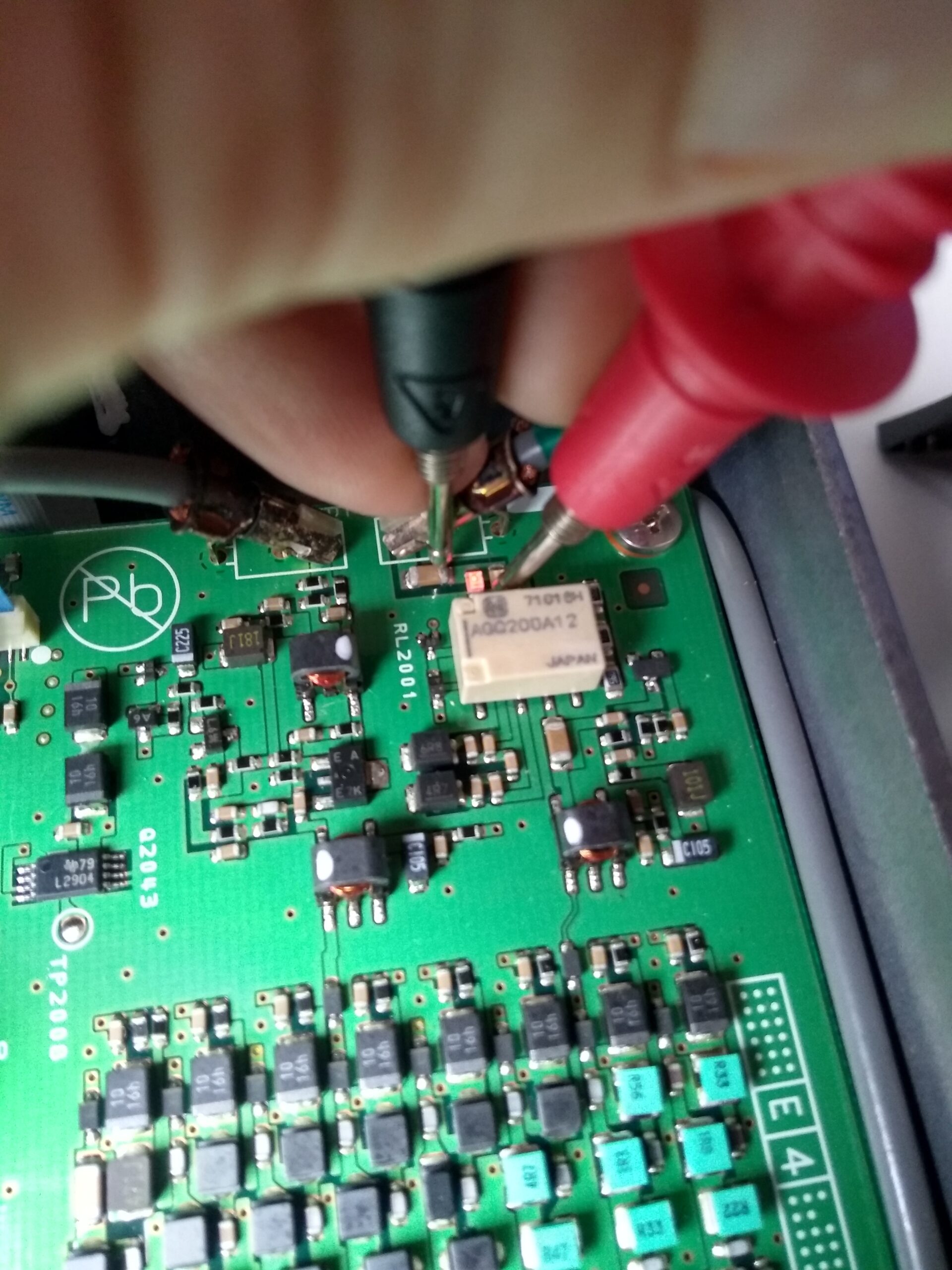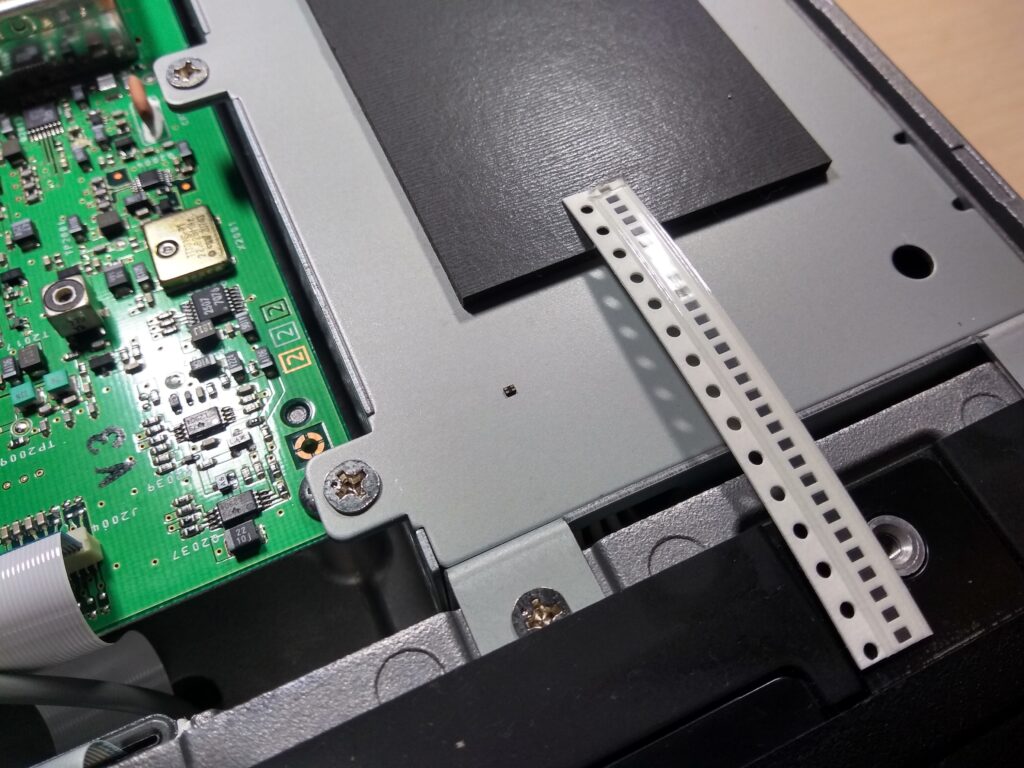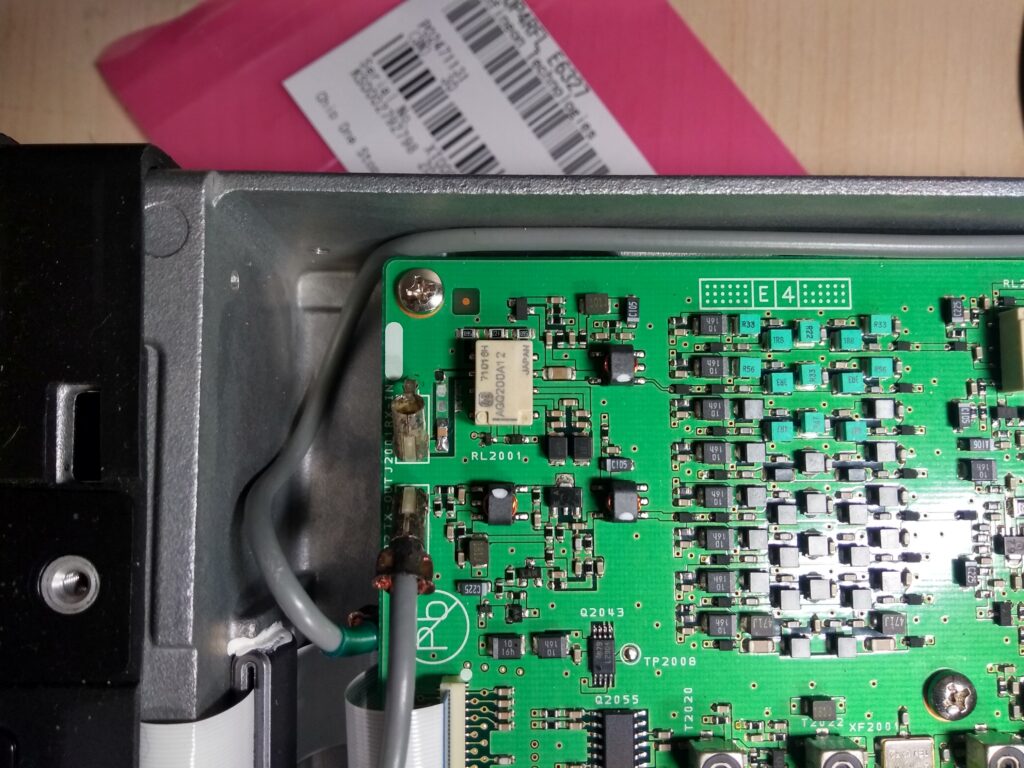Yaesu FT-450 - deaf on higher bands
I’ve always wondered why my FT-450 I bought second hand had a lower RX level on the higher bands, starting around the 20m band. I took a look at the schematic, and the input on the RX side is very classic: a DC blocking cap and protection diodes.
Protection diodes, wait – those aren’t RF protection diodes; they are bog standard SMD red LED’s! What was Yaesu thinking here? (“Let’s save 2 cents?”). Only reason they might have used these (and the only reason I can think of) – is that they maybe have a low capacitance. But seriously, Yaesu.. ?
Anyway, I set my multimeter to the diode setting and quickly realized that one of them was shorted. Really, who tries to use LED’s as protection diodes? Really not up to the task. Here’s one that was still working. The picture gives a good indication where you can find them on the PCB (underside of the transceiver).

The diodes are placed anti-parallel to clamp any over-voltage/ESD. But there are better parts to be found. I came across the Infineon ESD0P4RFL. It’s quite a bit smaller, but we can move the part a bit. It’s actually made for these purposes:
- Very low line capacitance: 0.4 pF @ 1 GHz ( 0.2 pF per diode)
- Very low clamping voltage
- ESD protection of RF antenna / interfaces or ultra high speed data lines acc. to:
- IEC61000-4-2 (ESD): ± 15 KV (air / contact)
- IEC61000-4-4 (EPT): 40 A (5/50 ns)
- IEC61000-4-5 (surge): 5 A (8/20 μs)
- Ultra small leadless package:1.2 x 0.8 x 0.39 mm³
Read that last line, yes – THAT small

I cleaned up the original location of the LED’s with some solder wick; also cleaning any flux residue on the board with IPA as flux does have a capacitive effect. I removed a bit of solder mask up the trace a bit as to fit the component correctly and applied some solder paste before re-flowing the part. Measures like a standard diode with a voltage drop of about 0.6 V – so easy to verify. It’s really small compared to the original LED’s – check it out at the bottom right of the trace.

Overall if you have a FT-450 – check that these aren’t already blown. I see *some* complaints about bad RX on these transceivers, but that’s really not the case *if* these diodes aren’t blown. So check up front, and replace “just in case” would be my advice.